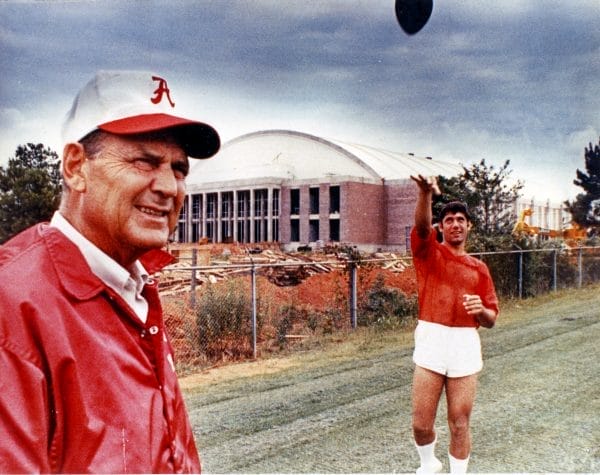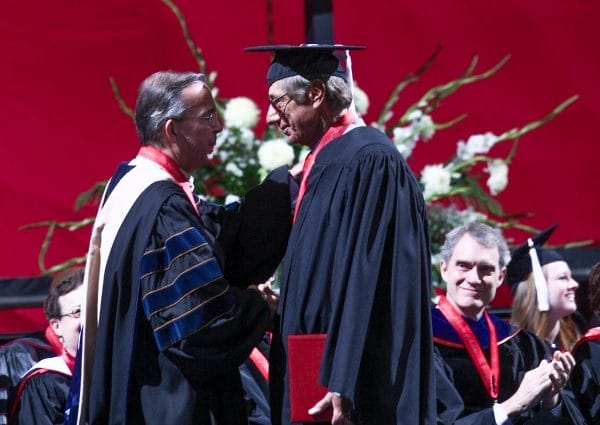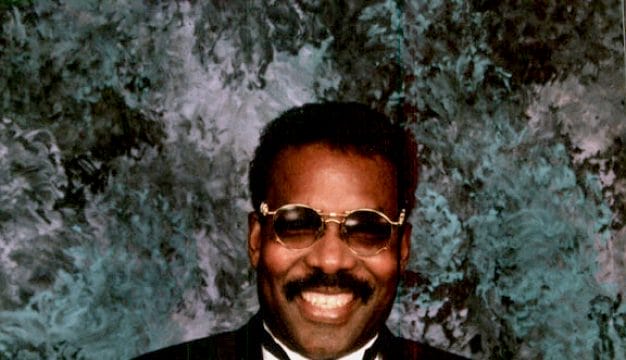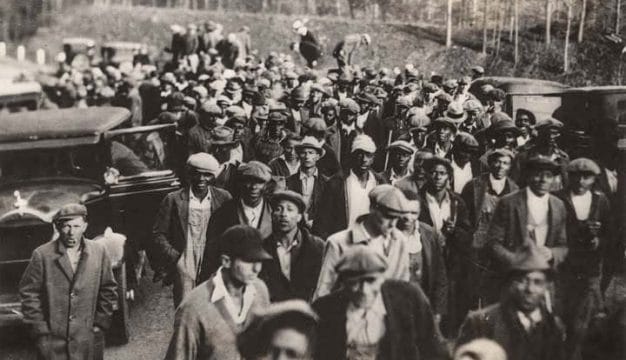Joe Namath
 Joe Namath
Joe “Joe Willie” Namath (1943- ) was the quarterback of the University of Alabama football team from 1962 until 1964, and for the New York Jets from 1965 until 1976. He helped redefine the quarterback position so that long passes and split-second deciphering of defenses became a professional norm. As a brash and witty star, he likewise helped elevate the public’s image of football players. While Namath would be famous for his record-setting collegiate career at Alabama, he is best remembered for his bold and accurate prediction that his New York Jets would defeat the Baltimore Colts in the third Super Bowl, regarded as one of the greatest upsets in sports history.
Joe Namath
Joe “Joe Willie” Namath (1943- ) was the quarterback of the University of Alabama football team from 1962 until 1964, and for the New York Jets from 1965 until 1976. He helped redefine the quarterback position so that long passes and split-second deciphering of defenses became a professional norm. As a brash and witty star, he likewise helped elevate the public’s image of football players. While Namath would be famous for his record-setting collegiate career at Alabama, he is best remembered for his bold and accurate prediction that his New York Jets would defeat the Baltimore Colts in the third Super Bowl, regarded as one of the greatest upsets in sports history.
Joseph William Namath was born in Beaver Falls, Pennsylvania, near Pittsburgh on May 31, 1943, to János “John” and Rose Juhász Namath. Namath’s paternal grandfather emigrated from Hungary, and his family name, Nemet, was changed to Namath upon his 1911 arrival in the United States. Born into a Hungarian Catholic family, Joe was the fourth of four brothers and had an adopted older sister. His father John was a steelworker. Namath began his football career as a skinny but successful replacement for an injured teammate in the ninth grade. In his high school senior year in 1960, he led the Beaver Falls Tigers to a state championship.
 Namath and Bryant
In his senior year of high school, Namath was signed to a football scholarship by the University of Maryland but failed to score high enough on his college board tests. The University of Alabama football program became aware of Namath’s availability and quickly sent a representative to Pennsylvania to sign him, as he also considered signing with baseball’s Chicago Cubs. Namath did sign with Alabama, where he would play for legendary coach Paul “Bear” Bryant, starting in his sophomore year of 1962. He transformed his middle name to “Willie” because he thought the name befitted an Alabama quarterback, and the nickname stuck. Bryant, whose specialty at the time was in commanding game-winning intensity even from players who had modest talent, said Namath was the best athlete he had ever seen. In three years as quarterback, Namath led the Crimson Tide to a 29-4 record, including three bowl appearances. In those years Alabama defeated the University of Oklahoma 17-6 in the 1963 Orange Bowl and the University of Mississippi 12-7 in the Sugar Bowl. The Crimson Tide lost to the University of Texas 21-17 in the Orange Bowl, but the team was still crowned national champion.
Namath and Bryant
In his senior year of high school, Namath was signed to a football scholarship by the University of Maryland but failed to score high enough on his college board tests. The University of Alabama football program became aware of Namath’s availability and quickly sent a representative to Pennsylvania to sign him, as he also considered signing with baseball’s Chicago Cubs. Namath did sign with Alabama, where he would play for legendary coach Paul “Bear” Bryant, starting in his sophomore year of 1962. He transformed his middle name to “Willie” because he thought the name befitted an Alabama quarterback, and the nickname stuck. Bryant, whose specialty at the time was in commanding game-winning intensity even from players who had modest talent, said Namath was the best athlete he had ever seen. In three years as quarterback, Namath led the Crimson Tide to a 29-4 record, including three bowl appearances. In those years Alabama defeated the University of Oklahoma 17-6 in the 1963 Orange Bowl and the University of Mississippi 12-7 in the Sugar Bowl. The Crimson Tide lost to the University of Texas 21-17 in the Orange Bowl, but the team was still crowned national champion.
 Joe Namath at UA Graduation
Namath notoriously missed the Sugar Bowl for violating curfews during his junior year after being suspended by Bryant, who valued team discipline above all else. Namath later affirmed the suspension as the right thing for Bryant to have done. A knee injury in his senior year prevented Namath from starting in the Orange Bowl against Texas, although he was voted most valuable player of the game, based on less than three quarters of play. Namath set single-season records in his first year as a starter, and by the time he left, he had set University of Alabama records for pass attempts, completions, yardage, and touchdowns. Namath lacked enough credit hours to graduate in 1965, but he returned to the University of Alabama in 2006 and graduated with a bachelor of arts degree in December 2007.
Joe Namath at UA Graduation
Namath notoriously missed the Sugar Bowl for violating curfews during his junior year after being suspended by Bryant, who valued team discipline above all else. Namath later affirmed the suspension as the right thing for Bryant to have done. A knee injury in his senior year prevented Namath from starting in the Orange Bowl against Texas, although he was voted most valuable player of the game, based on less than three quarters of play. Namath set single-season records in his first year as a starter, and by the time he left, he had set University of Alabama records for pass attempts, completions, yardage, and touchdowns. Namath lacked enough credit hours to graduate in 1965, but he returned to the University of Alabama in 2006 and graduated with a bachelor of arts degree in December 2007.
As a pro, Namath was at the center of changes that popularized professional football and its championship games. In 1965 he was signed to the New York Jets by owner Sonny Werblin, a former Hollywood television producer, for a then-record $427,000 over three years. Thus Namath became “Broadway Joe.” At the time the Jets were a mediocre team in the relatively new American Football League (AFL), and their signing of Namath and the AFL’s lucrative deals with NBC to broadcast AFL games helped transform the AFL from an upstart to a serious National Football League rival.
To end bidding wars for collegiate players like Namath, the NFL arranged in 1965 to begin a yearly interleague championship game called the Super Bowl in 1967 and to merge with the AFL in 1970. The first two Super Bowls were not yet the national phenomenon they later became, but that began to change in January 1969 when Namath guaranteed that the Jets would defeat the Baltimore Colts in Super Bowl III. His bravado called attention to a game in which the Jets were predicted by oddsmakers to lose by three touchdowns. Namath and the Jets’ defense dominated the game, and the Jets won 16-7, shocking the Colts and the football establishment. Namath was voted the game’s most valuable player. Largely due to this victory by an AFL team, the merger of the AFL and NFL the following year was seen as one of compelling equals.
Namath earned many accolades as a pro and in the 1967 season became the first quarterback to pass for more than 4,000 yards, a record that lasted for more than a decade. Television commentator and former Oakland Raider coach John Madden said that Namath had the best-looking drop, release, and pass that he had ever seen. By the middle of his professional career, Namath was almost as famous for his physical calamities as for his on-field successes. He seriously injured his right knee while he was with the Crimson Tide, and knee injuries plagued his career with the Jets. A broken wrist sidelined him most of the 1970 season, a left knee injury seriously compromised his play in 1971, and a separated shoulder kept him out of many games in 1973. Namath was fiercely competitive, however, and had a high tolerance for pain. He had played much of the 1968 AFL championship game against the Oakland Raiders with a concussion and a dislocated finger on his non-throwing hand. The surgeon who repaired Namath’s knee when he joined the Jets in 1965 estimated that he could play for four years; he played for 13, leaving the Jets to play the 1977 season with the Los Angeles Rams and then retiring.
 Joe Namath, 2006
Namath was famous not only for the long arcs of his passes but for a personal style rarely associated with football players. In the Jets’ championship season of 1968, he wore white cleats, long hair, a “Fu Manchu” mustache, and occasionally, even on the sidelines, a mink coat. He appeared in advertisements that occasionally made fun of his image as a playboy, including one for pantyhose. After hosting his own television show, The Joe Namath Show, for one season in 1969, he made a foray into acting, appearing as a guest star in numerous television shows (often as himself). He also performed on stage in several plays and musicals. In addition acting, he was a sports commentator with Monday Night Football and for the NBC Sports network. In 1985 Namath was inducted into the Pro Football Hall of Fame and was a member of the Monday Night Football broadcast team. He was married in 1984 to Deborah Lynn Mays (they were divorced in 1999), with whom he had two daughters. He currently lives in Florida and is a popular television advertising spokesperson.
Joe Namath, 2006
Namath was famous not only for the long arcs of his passes but for a personal style rarely associated with football players. In the Jets’ championship season of 1968, he wore white cleats, long hair, a “Fu Manchu” mustache, and occasionally, even on the sidelines, a mink coat. He appeared in advertisements that occasionally made fun of his image as a playboy, including one for pantyhose. After hosting his own television show, The Joe Namath Show, for one season in 1969, he made a foray into acting, appearing as a guest star in numerous television shows (often as himself). He also performed on stage in several plays and musicals. In addition acting, he was a sports commentator with Monday Night Football and for the NBC Sports network. In 1985 Namath was inducted into the Pro Football Hall of Fame and was a member of the Monday Night Football broadcast team. He was married in 1984 to Deborah Lynn Mays (they were divorced in 1999), with whom he had two daughters. He currently lives in Florida and is a popular television advertising spokesperson.
Further Reading
- Kriegel, Mark. Namath: A Biography. New York: Viking, 2004.
- Namath, Joe. Namath. New York: Rugged Land, 2006.
- The Legend of Broadway Joe. Dir. Steve Sabol. Perf. Joe Namath, George Sauer. DVD. NFL Films, 2006.



